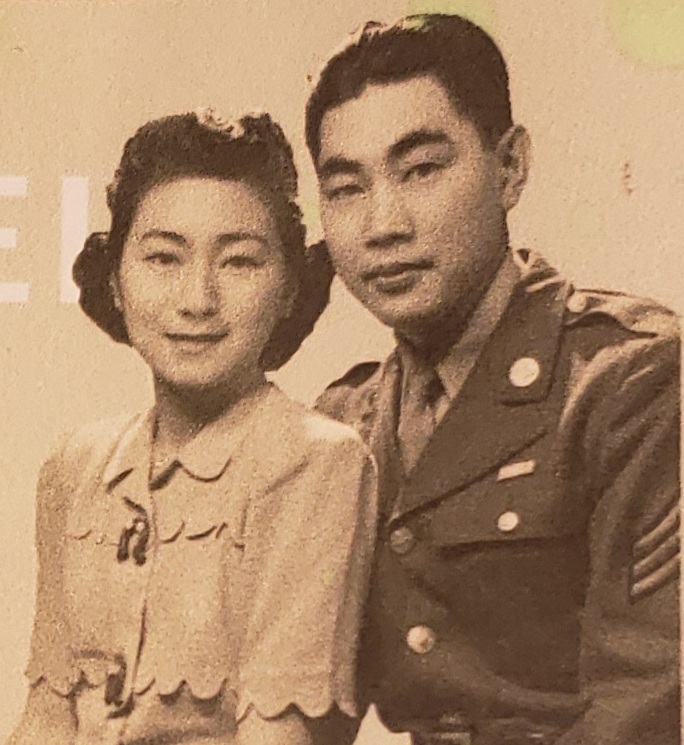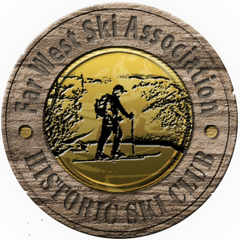by Carol Henri
Have you ever wondered about the term “Nisei” in our Club’s name? The word for ‘two’ in Japanese is ‘Ni’ (pronounced ‘knee’) and Nisei means 2nd generation Japanese-American, a person who was born in the United States to parents who emigrated from Japan. The Club was originally founded by and for Nisei skiers more than 60 years ago.
My parents were both Nisei, children of Issei (‘first generation’) farmers who came to the United States in the early 1900’s. My mother was born in Beverly Hills, when it was still undeveloped land covered with orange groves. My father was born in Watsonville on a strawberry farm.
When Pearl Harbor was bombed on December 7, 1941, my father was an enlisted private soldier in the U.S. Army, on leave from his military base, visiting his romantic interest, my mother. When they heard about the bombing, my father knew he had to get back to his base. They did not know this would be the last time they would see each other until 11 months later, when they wed in a concentration camp for Japanese-Americans in desolate Gila River, Arizona.
You are probably aware of that sordid chapter in American history more than 75 years ago, when all people of Japanese ancestry residing in the Western United States, mostly U.S. citizens like my mother and her siblings and my father’s siblings, were mandated by FDR’s Executive Order 9066 to leave their homes with only what they could carry. They were then detained for up to three years in hastily erected remote prison camps bound by barbed wire and watchtowers manned by soldiers with guns. It is important to note that none of the Issei were American citizens because they were not allowed citizenship due to the Asian Exclusion Act.
When my father returned to his base, they were in blackout and there was confusion and pandemonium. His commanding officer confiscated the firearms of the three Nisei privates and locked them in a room together. My father remembers cowering in the dark, fearing they were going to be lynched in the panic of the moment.
My mother, then age 21, experienced the multiple indignities of the discriminatory Order, including being herded like cattle to buses and trains wearing a tag with a number; living in dirty horse stables at the race track, which was used as a temporary holding area while the camps were being constructed; and living with her father and a sister in a small, bleak barrack room with no privacy, where desert dust was unrelenting and the temperature was either too hot or too cold.

Before they parted, my parents agreed to write to each other every day except Sunday. They did so for nearly a year, until they married on November 19, 1942 in the Gila River camp. They spent their wedding night in a camp barrack room that had been decorated by family and friends. My mother had purchased a simple beige (non-wedding) dress from a catalog and my father wore his army uniform for the ceremony.
I believe as a result of her unjustified incarceration as a young adult, my mother retreated from her Japanese heritage. She eventually embraced it 20 years later, when she learned Japanese brush painting (‘sumie’), Japanese flower arrangement (‘ikebana’), and Japanese cooking. She never learned the Japanese language, because her parents firmly believed that as an American citizen she should speak English.
My parents went to Japan for the first time in 1968. Both my grandfathers became proud United States citizens in the 1950’s, when the Asian Exclusion Act was finally repealed.



